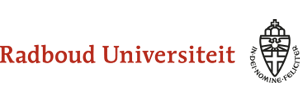American English Phonetics
Another American English Faculty Project
9.4 Ambisyllabic t, d: flapping, voicing, elision
Three Related Processes
In ordinary conversational styles, ambisyllabic /t,d/ are realized either as [d] or [ɾ]. The first arises through t-voicing, and the second through /t,d/-flapping. A third possibility arises because of /t,d/-elision. As a result of these processes, the opposition between ambisyllabic /t – d/ tends to be lost, so that pairs like atom– Adam, parity – parody but also winter and winner tend to be homophonous.
atom – /ˈæt̬əm/ [ˈæɾəm]
Adam – /ˈædəm/ [ˈæɾəm]
parity – /ˈpɛrət̬i/ [ˈpɛrəɾi]
parody – /ˈpɛrədi/ [ˈpɛrəɾi]
winter – /ˈwɪntər/ [ˈwɪ̃nə̃r]
winner – /ˈwɪnər/ [ˈwɪ̃nə̃r]
t-Voicing
t-Voicing will affect ambisyllabic /t/ after /n/ in certain words only. These words will vary from speaker to speaker, but common examples are seventy, certainty, carpenter. So pronounce these words /ˈsɛvn̩di/ etc.
seventy – /ˈsɛvənti/ [ˈsɛvə̃ndi]
Ambisyllabic /t/ may also be voiced to /d/ word-finally, as in the moment is, the treatment of. These /-nd/ clusters do not undergo flapping, and are treated like any such cluster in words that have –nd in the spelling, like sender (Rhodes 1992).
t/d-Elision
t/d-Elision occurs after /n/ in a strong syllable, as in center, fantasy, mental, and in phrases like went on, can’t afford, in front of.
center – /ˈsɛntər/ [ˈsɛ̃nə̃r]
fantasy – /ˈfæntəsi/ [ˈfæ̃nə̃si]
in front of – /ɪn ˈfrʌnt əv/ [ɪn frʌ̃n əv]
Elision of /d/ is less common; it may occur in words like fundamental, indication, under, kinda (i.e. kind of) and in phrases like send it, stand up.
fundamental – /ˌfʌndəˈmɛntəl/ [ˌfʌ̃nəˈmɛ̃nəl]
kinda – /ˈkaɪndə/ [ˈkaɪ̃nə̃]
Verging on substandard are pronunciations like /ˈɪnərˈduːs, ˈhʌnərd, for introduce, hundred, where the switching around of /r/ and /ə/ creates the environment for the elision of /d/.
Flapping
In words like atom – Adam, metal – medal, writer – rider both /t/ and /d/ are normally voiced and pronounced as a single tap of the tip of the tongue against the alveolar ridge. The articulation of flapped /t,d/, for which the symbol [ɾ] is used, is not unlike that of Spanish /r/ in pero, or Amsterdam Dutch /r/ in a word like serie. However, flapped /t,d/ do not have the friction that may be heard in the Dutch sound.
Flapping typically affects ambisyllabic /t,d/ after vowels. There may also be an /r/ before /t,d/. Recall that ambisyllabic consonants are created by WSP (I) or by liaison (II). Here are some examples. Pronounce them.
| I | II | ||
| t | d | t | d |
| hitting | kidding | hit Annette | read all of it |
| liter | shoddy | hit Anne | hid a treasure |
| bottle | heading | write a letter | made in Taiwan |
| Bottom | rider | quite at ease (2x) | ride a horse |
| Ghetto | avocado | meet a friend | he invited Ollie |
| Waiting | wading | bright eyes | a bad egg |
| hearty | hardy | start off | shored up |
Here are some questions you should be able to answer. Why don’t we get flapping in a tease, but do we get it in at ease?
a tease – /ə tiːz/ [ə tʰiːz]
at ease – /æt iːz/ [æɾ iːz]
And why don’t we get it in latex, but do we get it in later?
latex – /ˈleɪtɛks/ [ˈleɪtʰɛks]
later – /ˈleɪtər/ [ˈleɪɾər]
And why in my late ex?
my late ex – /leɪt ɛks/ [leɪɾ ɛks]
Also recall that in words like button, cotton, mountain, where /t/ appears before syllabic /n/, we always get t-glottaling, even though /t/ is ambisyllabic.
As a result of flapping, the members of pairs like futile – feudal, writer–rider, liter – leader, metal – meddle, waiting – wading, latter – ladder are homophones.
futile – /ˈfjuːt̬əl/ [ˈfjuːɾəl]
feudal – /ˈfjuːdəl/ [ˈfjuːɾəl]/
writer – /ˈraɪt̬ər/ [ˈraɪɾər]
rider – /ˈraɪdər/ [ˈraɪɾər]
liter – /ˈliːt̬ər/ [ˈliːɾər]
leader – /ˈliːdər/ [ˈliːɾər]
metal – /ˈmɛt̬əl/ [ˈmɛɾəl]
meddle – /ˈmɛt̬əl/ [ˈmɛɾəl]
waiting – /ˈweɪt̬ɪŋ/ [ˈweɪɾɪ̃ŋ]
wading – /ˈweɪdɪŋ/ [ˈweɪɾɪ̃ŋ]
latter – /ˈlæt̬ər/ [ˈlæɾər]
ladder – /ˈlædər/ [ˈlæɾər]
In at least one context, however, Canadian English maintains a distinction. This is when /aɪ, aʊ/ precede /t,d/, as in writer–rider, right on! – ride on!, a lout in the house – allowed in the house. Before voiceless obstruents, Canadian English has centralized [ʌɪ, ʌʊ] (which causes about the house to sound somewhat like ‘abote the hoce’ or ‘aboot the hoos’). These allophones are also used before /t/ in a flapping context, so that writer – rider, for instance, are different, not because of the consonants, but because of the vowels: [ˈrʌɪɾər] – [ˈraɪɾər].
